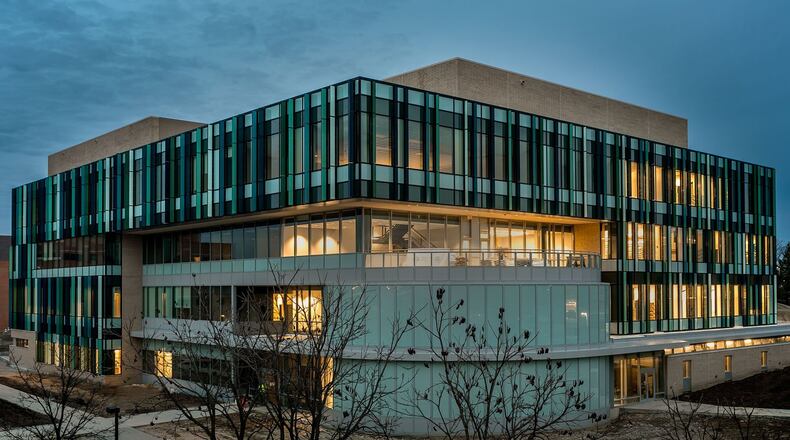In late 2022, leaders from Wright State, the Air Force Research Laboratory (AFRL), and Wright-Patterson Air Force Base unveiled a partnership that allowed base personnel to work in the Neuroscience Engineering Collaboration building. Now, that access has been widened across Wright State’s Fairborn campus, which is just minutes from the base’s Area A.
In time, more than 60 AFRL researchers have been working in laboratories at Wright State, creating opportunities for students along the way.
Tom Gunlock, chair of the Wright State board of trustees, celebrated the extension Friday.
“These partnerships are more than just strategic wins for Wright State,” he said. “They are wins for the region and most importantly, for the citizens of the Miami Valley.”
This partnership originally granted Air Force researchers complete access to office and laboratory spaces in Wright State’s Neuroscience Engineering Collaboration Building.
In the spring of 2022, Wright State researchers hailed what they said was the Dayton region’s sole advanced magnetic resonance imaging (MRI) scanner dedicated just to academic research — and university leaders saw the machine as a way to spark collaborations with Air Force scientists. The MRI scanner is located in the neuroscience building.
Air Force and university leaders held a reception celebrating the pact’s extension Thursday at the neuroscience home. A full 55,000 square feet of the four-story building is dedicated to research, the university says.
Headquartered at Wright-Patterson, AFRL is a global research and development organization with a workforce of more than 12,500 Air Force airmen, Space Force guardians, Department of Defense civilians and contractors, with an annual budget of about $9.5 billion.
Staff Writer Eileen McClory contributed to this story.
About the Author


